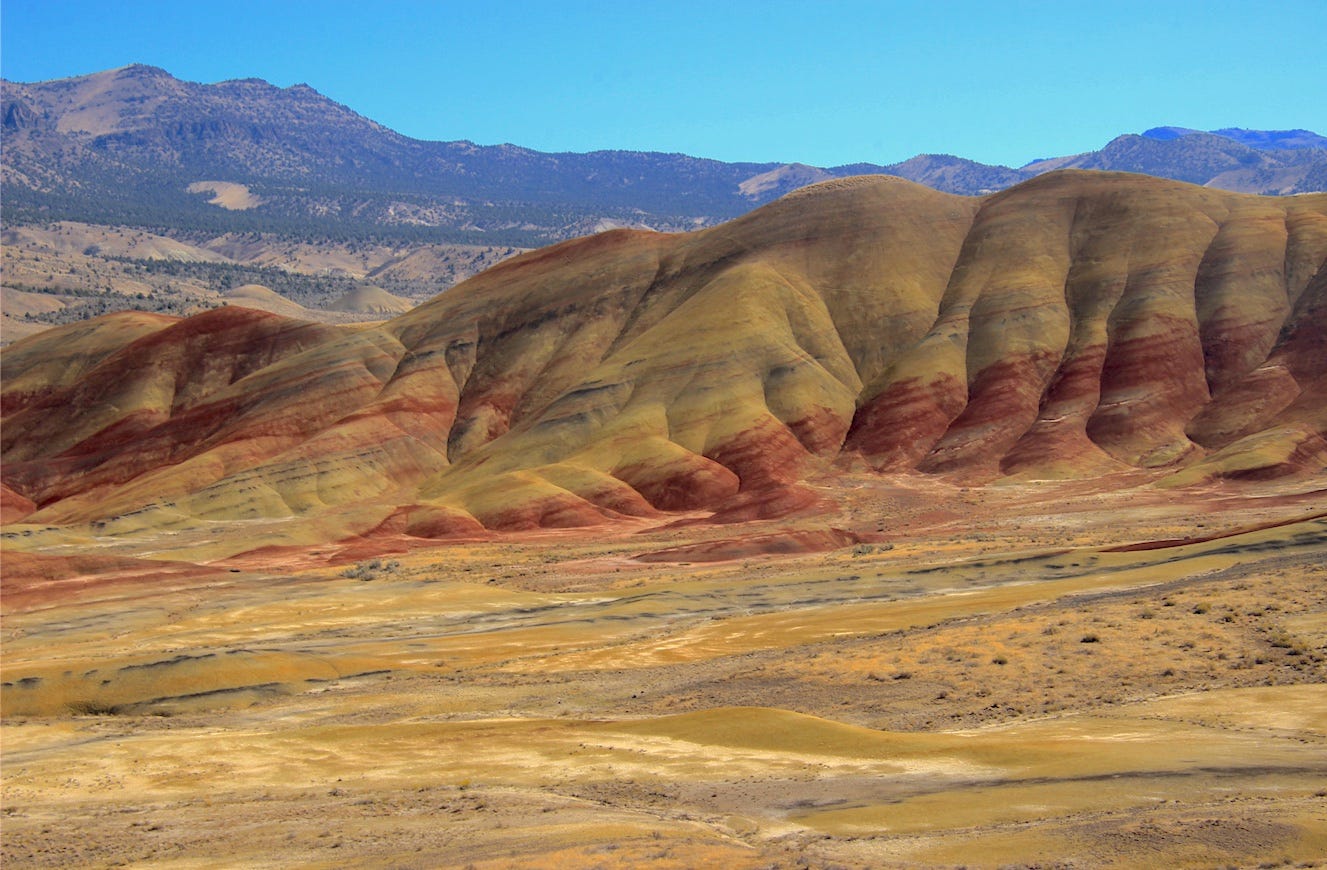Landscape view of the Painted Hills unit of the John Day Fossil Beds National Monument, near Mitchell, OR. The upland dark cliffs in the background are part of the much younger Columbia River Basalt Group.
Central Oregon’s painted hills
Sometimes you get lucky. Late September 2021 was one of those times.
My daughter and I no longer live in the same city. So my rendezvous with her on the last day of summer, three and a half years ago, was in a grocery store parking lot north of Bend, Oregon. She had driven from Portland, and I ‘d driven from Spokane, generally following a route that my son Devin and I had taken to view a total eclipse of the sun four years earlier.
Audrey on a designated trail through the “paleosoils” at the Painted Hills unit.
The good luck had to do with the weather. The northwest had been shrouded in wildfire smoke for weeks in advance, but the day before Audrey and I got together the first front of fall had brought snow to the Cascades and flushed out the smoke, even east of the mountains.
The result? Views like the one above from the John Day Fossil Beds National Monument’s Painted Hills section some sixty miles northeast of Bend.
Today’s post is free, but please support this project with a paid subscription to The Daily Rhubarb at the link above
It’s not that I’ve lost interest in basalt, the roughly 15 million year old layer cake of lava that underlies virtually all of the lower Columbia basin, south and east of the great river. I even have a long sheet I try to keep handy, that shows the names and age of each of the lava eruption events—not from volcanoes, but from long fissures in the Earth’s crust. There are discernible nuances among the flows but it’s okay to admit, out of earshot of the geologists, that it all looks about the same. It is possible to get basalt fatigue.
“Paleosoils” at the Painted Hills unit
And that’s part of what’s attractive about the John Day Fossil beds, with its bright red “paleosoils” and blueish green celadonite. Each of the venues fills different periods where a volcanism in the region was active but different than the later, massive flowing sheets that became the Columbia River Basalt Group.
“Red Hill”—one of the popular sites at the Painted Hills unit.
The colorful soils are two to three times as old as the surrounding basalt outcrops and take completely different shapes, including surreal towers at the Clarno Unit, not far from the tiny town of Antelope. We’ll visit that, here, some other time but it’s very much worth your time to see it in person. I don’t mind that the three John Day venues (Painted Hills, Clarno and Sheep Rock) are not encircled with fast food and coffee shops. So it’s a good idea to pack food and liquids.
—tjc











